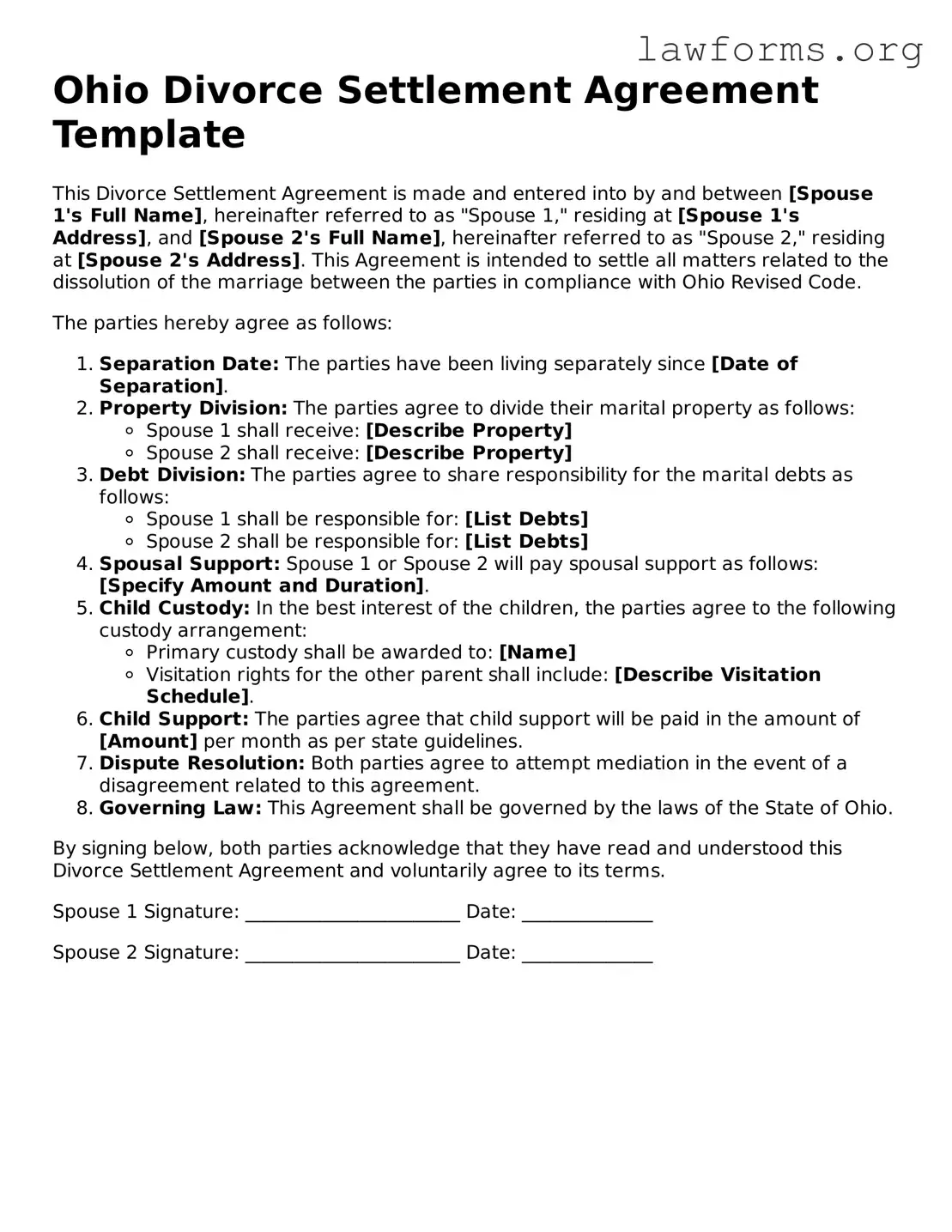Ohio Divorce Settlement Agreement Template
This Divorce Settlement Agreement is made and entered into by and between [Spouse 1's Full Name], hereinafter referred to as "Spouse 1," residing at [Spouse 1's Address], and [Spouse 2's Full Name], hereinafter referred to as "Spouse 2," residing at [Spouse 2's Address]. This Agreement is intended to settle all matters related to the dissolution of the marriage between the parties in compliance with Ohio Revised Code.
The parties hereby agree as follows:
- Separation Date: The parties have been living separately since [Date of Separation].
- Property Division: The parties agree to divide their marital property as follows:
- Spouse 1 shall receive: [Describe Property]
- Spouse 2 shall receive: [Describe Property]
- Debt Division: The parties agree to share responsibility for the marital debts as follows:
- Spouse 1 shall be responsible for: [List Debts]
- Spouse 2 shall be responsible for: [List Debts]
- Spousal Support: Spouse 1 or Spouse 2 will pay spousal support as follows: [Specify Amount and Duration].
- Child Custody: In the best interest of the children, the parties agree to the following custody arrangement:
- Primary custody shall be awarded to: [Name]
- Visitation rights for the other parent shall include: [Describe Visitation Schedule].
- Child Support: The parties agree that child support will be paid in the amount of [Amount] per month as per state guidelines.
- Dispute Resolution: Both parties agree to attempt mediation in the event of a disagreement related to this agreement.
- Governing Law: This Agreement shall be governed by the laws of the State of Ohio.
By signing below, both parties acknowledge that they have read and understood this Divorce Settlement Agreement and voluntarily agree to its terms.
Spouse 1 Signature: _______________________ Date: ______________
Spouse 2 Signature: _______________________ Date: ______________
